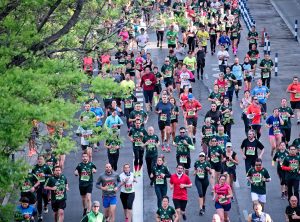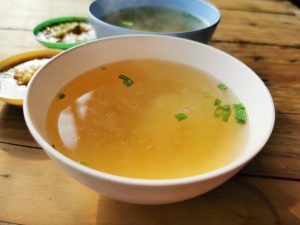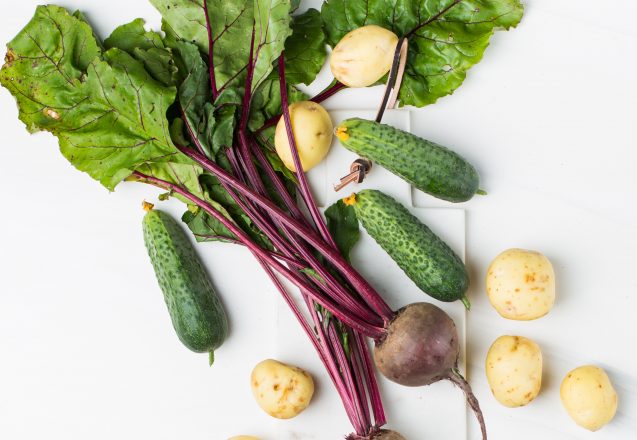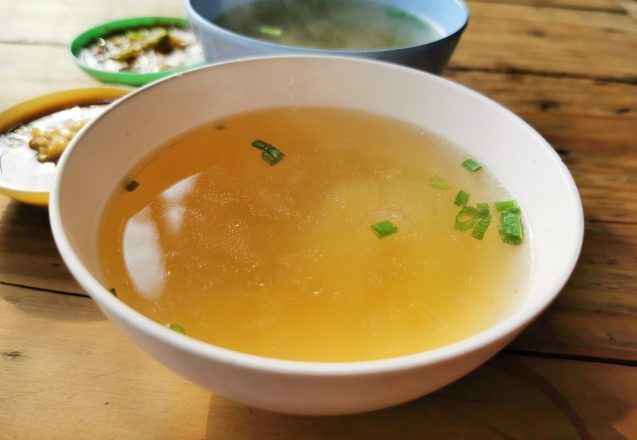Most Nutrient-Dense Veggies To Try
 People come to One Love Fit Club in Chino Hills, CA, for a number of reasons. Sometimes, it’s to build strength or endurance. People often want to get healthier or lose weight. One way to shed pounds and boost your health is to eat more nutrient-dense veggies. Vegetables are loaded with vitamins, minerals, phytonutrients and fiber. Your body needs all those things to be its best. Most vegetables are low calorie, so when you increase the amount you eat, it also helps you lose weight.
People come to One Love Fit Club in Chino Hills, CA, for a number of reasons. Sometimes, it’s to build strength or endurance. People often want to get healthier or lose weight. One way to shed pounds and boost your health is to eat more nutrient-dense veggies. Vegetables are loaded with vitamins, minerals, phytonutrients and fiber. Your body needs all those things to be its best. Most vegetables are low calorie, so when you increase the amount you eat, it also helps you lose weight.
Eating your leafy greens is important.
Spinach is one of the most nutrient-dense veggies, but so is kale, another green leafy veggie. Spinach has vitamin K, vitamin A, lutein, beta carotene and is found to be heart healthy. Kale, the other nutrient dense leafy green, also contains vitamins A and K, but also vitamin C. Studies show that if you eat kale with a high carb meal, you may control your blood sugar levels. Kale juice also may help lower high blood pressure.
Broccoli and other cruciferous vegetables provide lots of vitamins and phytochemicals.
Broccoli is an outstanding crucifer that is rich in glycosylate, a sulfur-containing compound. The glucosinolate has a byproduct known as sulforaphane, which may help protect against cancer. Broccoli also can decrease chronic inflammation, which is responsible for many serious conditions. It contains high amounts of vitamin C, folate, vitamin K, manganese and potassium, plus many other vitamins and minerals. Brussels sprouts is another crucifer that’s loaded with kaempferol. Kaempferol can help prevent oxidative damage to cells.
Beets are considered a superfood.
You probably have seen the latest rage over beets. They’re packed with all the goodness your body needs. They’re high in nitrates, which your body requires to produce nitric acid. Nitric acid helps the blood vessels dilate. By doing that, it lowers blood pressure. Many athletes also eat beets and drink beet juice, since it’s linked to athletic performance and endurance.
- Don’t forget garlic and onions. Both are alliums and contain allicin, which is beneficial for heart health and maintaining blood sugar levels. One study showed that just using garlic powder helped reduce insulin resistance.
- Carrots are also beneficial for increasing vitamin A. They contain beta carotene that the body converts to vitamin A. Carrots also may help prevent cancer and reduce the risk of lung cancer.
- Asparagus has lots of folate, which is important if you’re pregnant or considering having a baby. It also has been shown in animal studies to reduce oxidative stress, prevent damage to the kidneys and liver.
- Sweet potatoes are high in beta carotene, similar to carrots. They contain a high amount of potassium, vitamins B6 and C, as well as manganese. It can help control blood sugar and cholesterol levels.
For more information, contact us today at One Love Fit Club
What Foods Cause Inflammation?
 Inflammation has been linked to many serious conditions, including cancer and heart disease. What you eat may help inflammation or contribute to it. Some foods cause inflammation. Not all inflammation is bad. It’s a natural process that helps the body recover from infection, injury, irritants and foreign invaders. If tissue is damaged or invaded by a virus, bacteria or other microbe, the body sends out inflammatory response to protect it.
Inflammation has been linked to many serious conditions, including cancer and heart disease. What you eat may help inflammation or contribute to it. Some foods cause inflammation. Not all inflammation is bad. It’s a natural process that helps the body recover from infection, injury, irritants and foreign invaders. If tissue is damaged or invaded by a virus, bacteria or other microbe, the body sends out inflammatory response to protect it.
Chronic inflammation can be caused by a number of things, including what you eat.
Acute inflammation is the body’s way of handling an immediate problem, like a bacterial infection or cut. Chronic inflammation is more insidious. It goes amuck and continues to send out inflammatory cells even though there’s no danger. Rheumatoid arthritis is one example of that occurring. It can cause painful joints and deformities. Autoimmune diseases, colitis and atherosclerosis are also examples. Food with added sugar is just one example of things you eat that can cause inflammation.
What foods contain added sugar?
Just look on the grocery shelf at processed food and you’ll find sugar everywhere. It’s in pizza sauce and even yogurt, especially low fat yogurt. The manufacturers add sugar to improve the taste that was diminished by removing fat. You’ll find added sugar in salad dressing, ketchup, crackers and bread. The presence of too much added sugar increases insulin levels spike. Then the body tries to store the excess insulin in fat cells, causing weight gain and increased inflammation. Trans fats have been recognized as unhealthy and the cause of chronic inflammation, but it’s still found in a few foods like baked goods, pastries, crackers and some restaurant food.
Processed meat and red meat contribute to inflammation.
If you love bacon, sorry, but it’s highly processed and bad for you. Processed meat includes those that are cured, salted, fermented or smoked. Red meat also makes the list, especially if you eat too much. Studies show that both red meat and processed meat can increase the risk of cancer, heart disease and stroke, to which inflammation contributes. An imbalance of omega-6 and omega-3 increases inflammation, as well. You need both types of fatty acids, You need an approximate balance of one omega-3 for six omega-6 or a ratio of 1:6. The average American diet is a 1:25 ration, which causes inflammation. Lower omega 6 food and increase those containing omega 3.
- Refined carbs have little fiber or nutrition but are often at the top of the list in people’s diets. They include white rice, French fries, white bread and crackers. Just like food with added sugar, they spike insulin levels.
- Increasing the foods that reduce inflammation is one way to approach the problem. Most of these foods are fresh fruits and vegetables. They’re filled with fiber, phytonutrients, vitamins and minerals. Foods high in vitamin K are also anti-inflammatory.
- Avoid fried foods to help reduce inflammation. If you’re using oil, use olive oil, flaxseed oil and avocado oil, since they’re anti-inflammatory. Oils high in omega-6, like corn oil, increase inflammation.
- You don’t have to remove red meat from your diet completely. Get smaller servings or eat it less frequently, with meatless days throughout the week. Start by focusing on eating red meat just once a day and eat fish, vegetarian alternatives or eggs the other meals.
For more information, contact us today at One Love Fit Club
Are Morning Workouts More Effective?
 When scheduling your workout, you want to make it a time that you know you’ll be able to keep consistently. With that in mind, even if morning workouts are the most effective, but it doesn’t work with your scheduling, they aren’t the best. There are benefits to all times of the day, but what’s most important is actually doing the workout consistently.
When scheduling your workout, you want to make it a time that you know you’ll be able to keep consistently. With that in mind, even if morning workouts are the most effective, but it doesn’t work with your scheduling, they aren’t the best. There are benefits to all times of the day, but what’s most important is actually doing the workout consistently.
Working out early has its benefits.
One benefit of working out early is that you get it done before the distractions of life get in the way. If your day frequently becomes cluttered with other demands, exercising early is a way to avoid getting sidetracked and not working out at all. You’ll also be working out on an empty stomach, so you’ll burn more stored fat for your energy. That trains your body to do it more efficiently. If you’re working out to build muscle tissue, then the situation changes and you need to eat some protein before and after your workout. That makes a later workout better.
What’s your ultimate goal?
If endurance is the ultimate goal, such as training for a marathon or other event that requires endurance, late morning, evening or afternoon are best. Glycogen stores are their highest and you need adequate glycogen stores for endurance. The best time to workout is several hours after you eat a full meal that contains carbohydrates. For people that skip breakfast or use intermittent fasting to lose weight, working out later in the day will help ensure you don’t run out of steam in the middle of the workout.
Your body temperature plays a role in improving your strength and power.
You don’t have to take your temperature before a workout, but it does play a role in your power. While you sleep, your temperature drops, which allows the discs in your back to fill with liquid. If you’re awake for a while, the disc fluid returns to normal. So does the body temperature. If you workout too early, that isn’t allowed to happen, which make it less than ideal for power lifting, particularly for those who may have problems with their back.
- If you’re a night owl who hates getting up in the morning, a morning workout isn’t right for you. For others who love getting up early, but are ready for bed by eight, the morning works best.
- Finding the most effective time isn’t nearly as important as finding the time that’s good for you consistently. Scheduling your workout like an appointment at the same time every day helps you make it a habit.
- Some people say working out at night revs your body and can be the cause of insomnia. Recent studies show it isn’t true. In fact, an evening workout can even help you lose weight by suppressing the hunger hormone.
- Working out after work can be beneficial, particularly if you have a stressful job. It burns off the hormones of stress. It also could be a good way to start your day in a more positive manner. You can also divide your workout into two shorter sessions, one in the morning and one after work.
For more information, contact us today at One Love Fit Club
Training For Your First 1/2 Marathon
 One Love Fit Club in Chino Hills, CA, is for people who want to challenge themselves. It’s also for people who just want to get healthier, lose weight and have a healthy outlet. No matter what your motivation is, training makes you stronger and ready for the next challenge. People need to keep their juices flowing and that means new challenges. Some people love the challenge of a marathon and take up kickboxing to train for their first 1/2 marathon, while others take up the challenge of running and a marathon to improve their skills in kickboxing. They complement each other, since you train different muscles and skills.
One Love Fit Club in Chino Hills, CA, is for people who want to challenge themselves. It’s also for people who just want to get healthier, lose weight and have a healthy outlet. No matter what your motivation is, training makes you stronger and ready for the next challenge. People need to keep their juices flowing and that means new challenges. Some people love the challenge of a marathon and take up kickboxing to train for their first 1/2 marathon, while others take up the challenge of running and a marathon to improve their skills in kickboxing. They complement each other, since you train different muscles and skills.
You train for a 1/2 marathon by running.
Some of your training will definitely be focused on running. You have to improve your running stamina and build your pace on some runs. Start slower at a pace for recovery and end faster than that pace. Other runs, such as Fartlek training, should vary your speed in intervals, like HIIT—high intensity interval training. Include hills and varying terrain in some of your runs. Finally, go for a tempo run that keeps your pace steady, but at a high pace for a set number of miles. For the 1/2 marathon, it should be between 1-10 miles.
Rest and recovery are important.
If you’re pushing your muscles to the max, you need to give them time to recover. You also need to take a break from running to give your mental faculties a rest by switching focus. Rest helps prevent muscle injury. Rest doesn’t mean alternating with days when you don’t exercise at all with days you run. It’s active rest. It’s cross-training that may include yoga, swimming, weightlifting or even kickboxing.
How does kickboxing work into marathon training?
Kickboxing works different muscles and is an entirely different sport. It builds core strength and pushes your body with periods of low intensity and high intensity, with short rests in between occasionally. That’s important for building the cardio endurance necessary for running. It’s a total body workout, so it complements running that primarily works the lower body. Kickboxing also builds core strength. That is particularly important for people doing long distance running, since it’s one of the biggest problems faced by many runners.
- Don’t forget to sleep. Sleep is extremely important whether you’re training or actively competing. The third stage of sleep is extremely important. It’s when the body releases HGH—human growth hormone, which helps the body repair muscles.
- Don’t forget about a healthy diet throughout training. Leading up to the marathon, make sure your caloric intake is mostly from carbs. Your meals the day before a race should be low fiber, easy-to-digest high energy carbs and frequent.
- Hydrate frequently. When you’re training, make sure you have a hydrating pack or belt to get used to using if you’re going to wear one in the 1/2 marathon. When training, find a way to stash water or create a path that goes past water fountains.
- Use the help of a personal trainer who can guide you for the endurance training you need. He or she will create a program that will safely get you ready for your next challenge, whether it’s a marathon or kickboxing competition.
For more information, contact us today at One Love Fit Club
Will Drinking More Water Make Me Lose Weight Faster?
 There are a lot of simple changes you can make to help you lose weight faster. For instance, having a healthy snack ready so you don’t eat junk food is one. Taking the stairs instead of the elevator or parking further from the store and walking are two more. Is another aid to losing more weight drinking more water? The evidence points to it being especially good for not only your health, but also your weight loss program.
There are a lot of simple changes you can make to help you lose weight faster. For instance, having a healthy snack ready so you don’t eat junk food is one. Taking the stairs instead of the elevator or parking further from the store and walking are two more. Is another aid to losing more weight drinking more water? The evidence points to it being especially good for not only your health, but also your weight loss program.
Your body needs water to function properly.
Your body is mostly water. In fact, depending on your age and other factors, it’s between 55 yo 65% water. Your kidneys are approximately 79% water and heart and brain 73%. Why are those factors important? Even slight dehydration can cause you to slow down, burn fewer calories and make you less efficient when you workout. If you find you’re tired during the day or exhausted during your workout, drink a glass of water and you’ll probably feel more energized immediately.
There’s only so much space in your stomach.
Filling your stomach with sugar and empty calories causes your body to store those calories. If you drink water before you eat, it makes you feel fuller quicker when you do eat. One study found that people who drank water before they ate a meal consumed 75 fewer calories than those that didn’t. It might not sound like much, but when you consider that it could come into play at breakfast, lunch and dinner, it’s 225 calories that you skipped without any effort. In just 16 days you could lose one pound.
Water boosts your metabolism.
Drinking ice-cold water can cause your body to burn more calories, since it takes extra calories to warm the water in your body. One study shows that drinking more water, warm or cold, can boost your metabolism by as much as 30%. Drinking 8.5 glasses of water a day can boost your metabolism enough to burn an additional 96 calories. Just like drinking water before a meal does, the amount sounds small, but it all adds up to easier weight loss.
- Focus on making water your go-to drink. Soft drinks contain approximately 100 calories, calories that provide no benefit for the body. Diet drinks aren’t the answer either, since a recent study showed that diet drinks may add inches to your middle—belly fat.
- Your body is constantly signally your brain, but sometimes those signals are misinterpreted. If you feel like you’re hungry, maybe you just need water. Drink a glass first before you eat anything.
- Some manufacturers actually add salt to their soft drinks, which makes it taste better by taking the bitterness out of the carbonated water. It doesn’t taste salty, since the sugar and flavoring covers. Salt makes you thirstier, so you drink even more, adding even more calories.
- As you age, it’s harder for the body to stay hydrated. By the time you’re a senior, mild dehydration can be common. It can cause serious conditions, such as mimicking dementia or increasing the frequency of UTIs.
For more information, contact us today at One Love Fit Club
Is Diet As Important As Fitness?
 If you want a great body, we can help you achieve it at One Love Fit Club in Chino Hills, CA. We provide the workouts that help you lose weight and look your best. However, fitness isn’t enough if you have a diet that’s unhealthy and filled with calories. No matter how long you workout, you can’t out-exercise a bad diet. Both a healthy diet and regular exercise are important for both weight loss and overall good health.
If you want a great body, we can help you achieve it at One Love Fit Club in Chino Hills, CA. We provide the workouts that help you lose weight and look your best. However, fitness isn’t enough if you have a diet that’s unhealthy and filled with calories. No matter how long you workout, you can’t out-exercise a bad diet. Both a healthy diet and regular exercise are important for both weight loss and overall good health.
If you’re a junk food junkie, hours at the gym won’t get you the body you want.
Think about it. If you’re constantly filling up on junk food, empty calories, you won’t have the nutrients you need to build that healthy body. You won’t have the protein to build muscles and you probably will be consuming too many calories, so you’ll still be storing them as fat. A healthy diet is like breathing. You have to breath to survive. Exercise is like hydrating. You also need it to survive, just like a healthy diet and regular exercise. If you skip either one for very long, you’ll have negative results.
Both a healthy diet and regular exercise protects you at a cellular level.
Your body is an amazing machine that tends to rust out before it wears out. The more you work your muscles, the stronger they become. If you work out regularly, you build telomeres. They act like aglets for your chromosomes, those plastic tips at the end of the shoelaces to prevent the laces from unraveling. That prevents cell damage. A healthy diet can also help prevent inflammation and has antioxidants that prevent free radicals from damaging cells.
Jack Lalanne said it best.
There’s a famous quote from Jack Lalanne, the exercise and fitness guru. “Exercise is king. Nutrition is Queen. Put them together and you have a kingdom.” That sums it up perfectly. You have to have both. However, since you can’t out-exercise a bad diet, good nutrition is a key to a healthy lifestyle. Exercise can help you lose weight, just as a healthy diet can. Since obesity is the leading cause of preventable deaths, it’s important to have both good nutrition and a fitness routine.
- Luckily, you don’t have to choose between eating a healthy diet and exercising. In fact, the fitter you get the easier it becomes to eat healthy and the more you eat healthy, the easier it is to get fit.
- Eating healthy is not the same as dieting. Dieting is limiting and leaves you feeling deprived. Eating healthy can actually offer more food and even include healthy snacks that are delicious.
- While a well-balanced exercise program is easier when you have help from a personal trainer, you can also do it by simply being more active. Bike riding, walking, dancing and even kickboxing are fun activities, but also ones that contribute to your fitness regime.
- While scheduling a half hour a day for exercise is important, sometimes life gets in the way. The good news is that you don’t have to workout 30 minutes straight. You can break it up to shorter ten minute sessions three times a day and get the same benefits.
For more information, contact us today at One Love Fit Club
Benefits Of Bone Broth Compared To Soup
 Before we delve into which is better, bone broth or soup stock, both need to be defined. A lot of soups are passed off as bone broth that simply aren’t. Real bone broth uses the parts of the animal that you would normally pitch, such as tendons, ligaments, joints and bones! It’s even better when the marrow of the bone becomes part of the broth. Sometimes the skin, knuckles, beaks, hooves or fins are included. When broth is made, vegetables, spices and herbs are added. Soup stock, on the other hand contain all the above except the other animal parts like the joints, beaks and hooves.
Before we delve into which is better, bone broth or soup stock, both need to be defined. A lot of soups are passed off as bone broth that simply aren’t. Real bone broth uses the parts of the animal that you would normally pitch, such as tendons, ligaments, joints and bones! It’s even better when the marrow of the bone becomes part of the broth. Sometimes the skin, knuckles, beaks, hooves or fins are included. When broth is made, vegetables, spices and herbs are added. Soup stock, on the other hand contain all the above except the other animal parts like the joints, beaks and hooves.
How long you cook the two is a big difference.
Another difference, in fact the biggest difference, is the length of cooking time. If you’re making soup stock for supper, you might start it at noon. However, if you’re making bone broth, you’ll start between 24 and 48 hours before you expect to use it. The long cooking time and focus on using all the parts of the animal add up to a more nutritious brew that contains more nutrients for your health than any soup stock could.
It’s all about the nutrients locked in the bones and joints.
The longer you cook the bones and the cartilage, the more nutrients it releases. One of those nutrients is collagen. It’s the protein that’s most abundant in the body and is important for all parts, but especially for hair joints, bones, teeth and hair. As you age, the body’s collagen breaks down by as much as a percent or two a year. A study in 2014 showed that collagen consumption improved skin elasticity and moisture. Consuming collagen in bone broth helps your body replace that lost collagen. While soup stock may have a minimal amount of collagen, because of the short cooking time and lack of cartilage, tendons and ligaments, it’s not enough to make a difference.
There are also other nutrients that you find in real bone broth that you won’t find in soup base.
If you’ve ever considered purchasing supplements of chondroitin and glucosamine for joints, don’t do it. Instead, make a pot of bone broth. It contains both and can help relieve joint pain and inflammation. Bone broth also contains more minerals, amino acids vitamins and other nutrients that are important for good health, compared to soup stock.
- Make sure you use bones and parts from grass fed beef parts, free range or pasture-raised chicken parts and wild caught fish. Check to see if the animal was raised organic.
- The amount of nutrient content of bone broth depends on the animals and animal parts used and other ingredients. Fish bones, for instance, have iodine and other animal bones don’t.
- Animal bones are a source of phosphorus, potassium, magnesium, calcium and many other trace minerals. If it contains bone marrow, vitamins A, K2, boron, zinc, iron, omega-6 and omega-3, selenium and manganese are part of the broth.
- Bone broth may help certain conditions, such as IBD, IBS, Crohn’s and leaky gut. It contains glycine and arginine, which are anti-inflammatory. You can use it as a replacement for soup base.
For more information, contact us today at One Love Fit Club
- 1
- 2
- 3
- …
- 13
- Next Page »
 13609 Central Ave, Ste E Chino, CA 91710
13609 Central Ave, Ste E Chino, CA 91710






